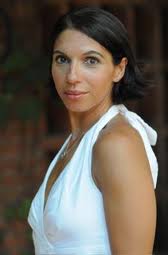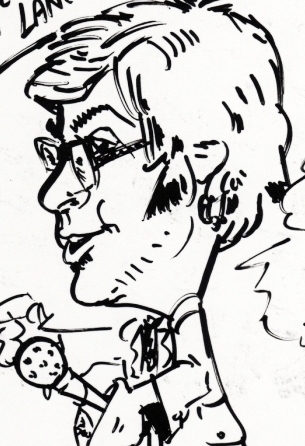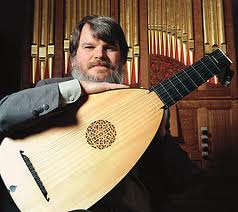Welcome to our free classical music site

Do you write about classical music? Are you a blogger? Want to team up with Classical Connect? Send us a message, let's talk!

Do you write about classical music? Are you a blogger? Want to team up with Classical Connect? Send us a message, let's talk!
December 5, 2011
Two Beethoven’s Quartets. We don’t feature string quartets often enough. Some of the most sublime and sophisticated music has been written for this intimate ensemble, but till recently our library was rather poor in this regard. Fortunately, young musicians at the Steans Institute play quite a lot of this wonderful music in informal ensembles. In anticipation of Beethoven’s birthday on December 16, here are two recordings made at the Steans.
The traditional sequencing of Beethoven’s three string quartets opp. 130,131 and 132 is somewhat misleading. Beethoven wrote Quartet no 15, op.132 first, in 1825 (it is actually his 13th quartet, the number 15 is the order that this quartet was published in, not written). The majestic Op. 130 with the Große Fuge finale followed later the same year. Op. 131 was completed in 1826.
Beethoven composed String Quartet in a minor, op. 132 following a serious illness, which he thought was fatal (in the score, above the third movement, Beethoven wrote the inscription which reads, in translation: “Song of thanksgiving to the Diety on recovery from an illness, written in the Lydian mode”). This vast movement (almost 17 minutes long, it starts 18 minutes 30 seconds into the performance) is undoubtedly the epicenter of the work, not just structurally but emotionally. Beethoven, who in later years became greatly interested in the old ecclesiastical modes, modeled it along the lines of variations on a cantus firmus with intervening episodes. We’ll hear this quartet (here) performed by Miho Saegusa, violin, Miriam Fried, violin (teachers at the Steans often play alongside their students), Vicki Powell, viola and the recent Tchaikovsky winner Narek Hakhnazaryan, cello.
Beethoven’s String Quartet No. 14 in c-sharp minor, op. 131 was completed in 1826. The c-sharp minor quartet is wholly unique, even in Beethoven’s oeuvre. Comprised of seven movements played continuously without break, it runs for about 40 minutes. From the opening movement, Adagio, written as a fugue rather than in the traditional sonata form, its themes develop in a continuous flow, without pause, weaving one into another. It is performed by Miho Saegusa, violin, Kobi Malkin, violin, Alex Link, viola, and Karen Ouzounian, cello. To listen, click here.
November 28, 2011
Recent anniversaries, redux. An astrologist or a musically inclined statistician may consider studying the pattern of composers’ birthdays: there are long stretches with not a single anniversary, and then a treasure trove of great names. Here are several, recent and upcoming this week.
Benjamin Britten, probably the greatest British composer of the 20th century, was born on November 22, 1913. His greatest work was in the opera: just think of Peter Grimes, The Beggar's Opera, Billy Budd, The Turn of the Screw (it’s said that he has more operas performed worldwide than any other composer born in the 20th century). We don’t have recordings of Britten’s operas, but here’s his String Quartet No. 2, Op. 36. It’s performed by Miho Saegusa (violin), Jung-Eun Jenny Ahn (violin), Jan Grüning (viola), and Matthew Allen (cello).
Two Spanish composers, Joaquin Rodrigo, famous for his guitar Concierto de Aranjuez, and Manuel De Falla, one of the most important Spanish composers of the 20th century, have their anniversaries one day apart. Rodrigo was born on November 22, 1901, De Falla – on November 23, 1876. Here’s Rodrigo’s Sonata Giocosa played by the guitarist Ana Vidovic. And here’s an old recording of De Falla’s Danse Espagnole made by the wonderful Russian-American violinist Albert Markov with the late Milton Kaye on the piano.
One of the most interesting Soviet composers of the second half of the 20th century, Alfred Schnittke was born on November 24, 1934. Here’s the second movement of his Piano Quintet. It’s performed by the great proponent Schnittke’s music, the violinist (and conductor) Mark Lubotsky and his colleagues: Dimity Hall (violin), Irina Morozova (viola), Julian Smiles (cello), with Schnittke’s widow Irina on the piano.
And finally, the great French-Italian composer, the founder of the French Baroque music and the favorite court musician of Luis XIV, Jean-Baptiste Lully was born on November 28,1632 in Florence. Here’s his Suite from Bourgeois gentillomme, played by Baroque Band. And we didn’t even get to Gaetano Donizetti!
November 21, 2011. The pianist Lara Downes‘s ability to communicate with her public is especially evident in her projects such as 13 Ways of looking at the Goldberg. 13 Ways is the re-imagining of Bach’s famous Aria by 13 outstanding composers, among them Lukas Foss, David Del Tredici, William Bolcom, Bright Sheng, and others. Lara Downes takes these stylistically diverse responses to Bach and creates a suite that has integrity all its own. Another of Ms. Downes’s projects, Bodies in Motion, is a concert-length integrated multimedia piece. In it, her performance of music by Kevin Puts, Adam Silverman, and Laurie San Martin is combined with choreography by David Grenke and imaginative video by Glenda Drew. No less inspiring is The Americans, a retrospective of early 20th century American concert music, accompanied by a projected landscape of early American documentary photography.
13 Ways is the re-imagining of Bach’s famous Aria by 13 outstanding composers, among them Lukas Foss, David Del Tredici, William Bolcom, Bright Sheng, and others. Lara Downes takes these stylistically diverse responses to Bach and creates a suite that has integrity all its own. Another of Ms. Downes’s projects, Bodies in Motion, is a concert-length integrated multimedia piece. In it, her performance of music by Kevin Puts, Adam Silverman, and Laurie San Martin is combined with choreography by David Grenke and imaginative video by Glenda Drew. No less inspiring is The Americans, a retrospective of early 20th century American concert music, accompanied by a projected landscape of early American documentary photography.
Not that Ms. Downes eschews more traditional venues. Her 1988 concert debut took her to the Queen Elizabeth Hall in London, the Vienna Konzerthaus as soloist with the Wiener Kammerorchester, and at the Salle Gaveau in Paris. Since then she has played at Carnegie Hall, Kennedy Center, Lincoln Center, the American Academy Rome, San Francisco Performances, the Montreal Chamber Music Festival among many others. Her chamber music appearances include collaborations with violinists Rachel Barton Pine and Lara St. John, cellists Zuill Bailey and Denis Brott, the Miami and Alexander String Quartets, and the Brubeck Institute Jazz Quintet. Ms. Downes studied with Adolph Baller and Reah Sadowsky in San Francisco and later worked under Hans Graf at the Vienna Hochschule and Rudolph Buchbinder at the Musik Akademie Basel.
13 Ways of looking at the Goldberg was commissioned by the Gilmore Festival and premiered by the great new-music pianist Gilbert Kalish in 2004. The title and the concept were inspired by the poem “Thirteen Ways of Looking at a Blackbird” by Wallace Stevens, but it’s also reminiscent of Olivier Messiaen’s Vingt regards sur l'enfant-Jésus. While the music varies from atonal to neo-romantic, from jazzy to elegiac, Ms. Downes makes it work as a single whole. We’ll hear several pieces; here’s the Aria, the cornerstone of both the original variations and 13 Ways. Fred Lerdahl’s pointillist Chasing Goldberg follows (here). Jennifer Higdon wrote the second piece, called The Gilmore Variation (here). The 20th century American classic, Lukas Foss, wrote an evocative fourth variation and called it Goldmore Variation (here). The young American composer and clarinetist Derek Bermel wrote a jazz-inspired, nervous variation number five, Kontraphunktus (here). David Del Tredici’s piece, My Goldberg (variation number 11) is, as much of Del Tredici’s music, romantic without being mawkish (here).
We have a number of other recordings by Ms. Downes, from Weber and Liszt to Bolcom and Barber. You can find them on her page.Permalink
November 14, 2011
Anniversary odds and ends. Here are several recent and upcoming birthday anniversaries, which we’d like to note. Niccolò Paganini was born on October 27, 1782. His anniversary comes just five days after that of Franz Liszt’s, who was so impressed by Paganini’s virtuoso playing that it changed his own performing career. Here’s Paganini’s La Campanella, from the third movement of his Second violin concerto; Liszt later used it in one of his “Grandes études de Paganini.” It’s arranged for viola and performed by the Russian-Italian violist Anna Serova, with Jenny Borgatti on the piano.
Vincenzo Bellini, who was born on November 3, 1801 is of course known for his great bel canto operas, Norma, I puritani, La sonnambula. Maybe one day we’ll have them online, but for now we’ll have to be content with an arietta. Vaga luna, che inargenti (Beautiful moon, dappling with silver) is sung by the soprano Leah Partridge, Anne Breeden is on the piano.
The great French baroque composer François Couperin was born on November 10 in 1668. Here’s his Air de Diable, from the so-called New concerts written in 1724. It’s performed by Amit Peled, with Eliza Ching on the piano.
And this week marks anniversaries of two composers of the 20th century. Aaron Copland was born on November 14, 1900; Paul Hindemith was born five years earlier, on November 16 of 1895. We’ll hear two pieces for the flute. First is Duo for Flute and Piano by Copland, composed in 1971 (it’s played by Martha Councell, flute and Richard Steinbach, piano – listen to it here). As so much of late Copland’s work, it’s lyrical, “American” and deceptively simple. Hindemith’s Sonata for Flute and Piano is very different. Written in 1936, it’s neo-classical in style and, though lighter than many of Hindemith’s pieces, is still full of tension, especially in the second and third movements. The sonata is played here by Jennifer Bartel, flute and Melody Lord, piano.
And finally, Carl Maria von Weber, the “first Romantic,” was born on November 18, 1786. His ever-popular Invitation to the Dance is played by the pianist Lara Downes (to listen, click here).
November 7, 2011. Boyce Lancaster interviews Paul O'Dette. Paul O’Dette is a Grammy-nominated American lutenist, conductor, and overall specialist in early music. He plays the lute, the Baroque guitar and mandolin, the theorbo and other Renaissance and Baroque instruments. Here he plays a Baroque guitar; the piece, Fandango, is by Santiago de Murcia (1673 – 1739), a Spanish composer and guitarist. The wonderful Toccata Arpeggiata (here) is by the German-Italian Johann Hieronymus (Giovanni) Kapsberger (1580 –1651); it’s played on the theorbo, a long-necked lute. You can hear that it’s a much more powerful instrument than the baroque guitar. And here O’Dette plays a lute. The piece is Piva, by the early 16th century Italian lutenist and composer Joan Ambrosio Dalza (all three pieces are courtesy of YouTube). The complete interview is here, and below is Boyce’s introduction to his conversation with Paul O’Dette.
He plays the lute, the Baroque guitar and mandolin, the theorbo and other Renaissance and Baroque instruments. Here he plays a Baroque guitar; the piece, Fandango, is by Santiago de Murcia (1673 – 1739), a Spanish composer and guitarist. The wonderful Toccata Arpeggiata (here) is by the German-Italian Johann Hieronymus (Giovanni) Kapsberger (1580 –1651); it’s played on the theorbo, a long-necked lute. You can hear that it’s a much more powerful instrument than the baroque guitar. And here O’Dette plays a lute. The piece is Piva, by the early 16th century Italian lutenist and composer Joan Ambrosio Dalza (all three pieces are courtesy of YouTube). The complete interview is here, and below is Boyce’s introduction to his conversation with Paul O’Dette.
The Masterful Talent of Paul O’Dette.
The Toronto Globe and Mail described Paul O’Dette as the clearest case of genius ever to touch his instrument. No one I have spoken with regarding Paul and his playing has ever disputed that, but they are usually surprised when I mention that his acquaintance with the classical guitar and his eventual love for the lute family came about because he wanted to be a better rock guitarist. The story he tells in part two of our conversation (which you can hear below) would sound like something a publicist created, had I not heard it straight from Paul himself. It is a story, which has been corroborated by his family.
His quest is still to improve his playing continues, but it has been some 35 years since he last touched an electric guitar. He did confess, however, to occasionally throwing a blues lick into something he is playing! That is really not such an odd practice, however, as much improvisation was expected of musicians of the day. He explains that, if you look at a piece of modern music next to a lute tablature, you’ll see two entirely different languages. The tablature is much easier to understand, especially for a novice, as it simply tells you where your fingers go on the fretboard, rather than what note to play. It also expects the player to be able to improvise and add ornamentation.
What that means is that understanding performance practices of the day and learning what composers meant in what they wrote can be the difference between being a good, or even great, player and being a masterful one. I think most would agree that Paul O’Dette has attained master status.Permalink
October 31, 2011
Four Singers from the Steans. It was a delightful production of The Tales of Hoffmann at the Lyric, which featured young singers such as Anna Christy, Erin Wall and Mathew Polenzani, that reminded us again of the excellent Singers program at the Steans Institute of Music. In one of our previous posts we wrote about the Steans, Ravinia Festival's summer conservatory. We’d like to present to you four young singers who studied and performed at the Steans in the past couple of years.
Mezzo-soprano Wallis Giunta is a member of The Canadian Opera Company Ensemble Studio. She’s a winner of the Ottawa Choral Society New Discoveries Auditions, the Royal Conservatory Orchestra Concerto Competition and the Lilly Kertes Rolin International Vocal Prize. She has appeared with the Toronto Classical Singers, the Regina Symphony, the Aspen Music Festival and Mooredale Concerts. Here she sings Canción de cuna para dormer a un negrito, from Cinco Canciones Negras by the Catalan composer Xavier Montsalvatge. Daniel Schlosberg is on the piano.
Tenor Steven Ebel, a Wisconsin native who grew up coming to Ravinia, is currently a member of the Jette Parker Young Artist Programme at London’s Royal Opera House. He has also been heard in Italy and across the United States. A champion of new music, he has presented many world premieres and is the first singer in the history of the Royal Opera House to perform his own composition there, Diary of a Young Poet. His awards include prizes from the Concours de Montreal, New York Oratorio Society, Joy in Singing, Tanglewood Music Center and the Metropolitan Opera Auditions. He sings Robert Schumann’s Liebeslied, Op. 51, No. 5 (here). Mr. Ebel is accompanied by Daniel Schlosberg.
Mezzo-soprano Liza Forrester’s busy career includes performances with New York City Opera, Cincinnati Opera, Glimmerglass Opera and the Cincinnati May Festival. The New York Festival of Song and the Caramoor Festival have presented her in recital. She holds a doctor of musical arts degree from the Cincinnati College-Conservatory of Music and awards from the Metropolitan Opera National Council, the Norman Triegle Corbett Opera Competition and the Atlanta Music Club. Here she sings another song by Robert Schumann, his Er, der Herrlichste von allen, from the cycle Frauenliebe und -leben. The pianist is Jonathan Ware.
Baritone Michael Kelly won this year’s Joy in Singing Competition and was featured in Acis and Galatea with Boston Early Music Festival, in recital at New York's Trinity Church, in John Corigliano’s The Ghosts of Versailles in Aspen, in Schubert’s Winterreise in Houston, and with his group SongFusion. He’s also a winner of the Liederkranz Foundation’s Song Competition in 2010. Michael Kelly has performed with Opernhaus Zurich, Chicago Opera Theater, and Tanglewood, and has presented recitals in the US and Europe. Here he sings Samuel Barber’s song A green lowland of pianos, from Three Songs, Op.45. The lyrics are by the Polish poet Jerzy Harasymowicz and were translated into English by Czeslaw Milosz. Mr. Kelly is accompanied by Jonathan Ware.